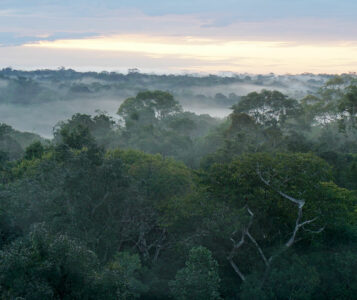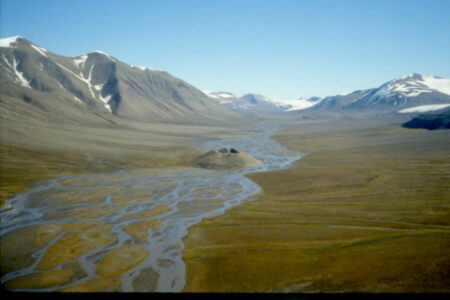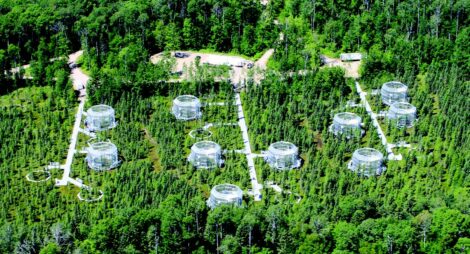Terrestrial Ecology

NGEE Tropics. Tropical forests such as the Amazon (pictured) exert a dominant control on the global energy and water cycles. A critical question is whether these forests will exert an increasingly important influence on the variability and trends of meteorological and hydrological patterns of the entire Earth system. [Courtesy Lawrence Berkeley National Laboratory]
Priority Research Objectives
Through hypothesis-driven observations, experimental manipulations, and large-scale, long-term field studies, ESS supports foundational terrestrial ecology research, including studies in critical and potentially sensitive ecosystems. The program’s goals are to understand and explain mechanisms and processes controlling primary production, nutrient dynamics, elemental cycling, biogeochemistry, and the impacts of disturbance on terrestrial ecosystems.

Permafrost Landscapes. Degradation of ice-rich permafrost causes subsidence and increased variability in topography across the Arctic landscape. Associated changes in hydrology, vegetation, and biogeochemistry create “hot spots,” i.e., locations within an ecosystem that exert a disproportionately large influence on biogeochemical processes and material exchange.
Terrestrial ecology research focuses on ecosystems and ecological processes that are globally or regionally significant, expected to be sensitive to environmental change, and are insufficiently understood or inadequately represented in models. As part of the Biological and Environmental Research (BER) program, ESS coordinates with BER’s Earth and Environmental Systems Modeling program (and research from other federal agencies), ensuring that experimental and observational results are incorporated into Earth system models to enhance model projection accuracy and inform DOE’s mission needs. ESS is a leader among U.S. and international agencies in the design, construction, and operation of pioneering, long-term, large-scale field experiments that are critical to understanding ecosystem responses to a changing environment.
Examples of ESS investments in terrestrial ecology research include:
- BER’s innovative concept for coupling models with experimental and observational campaigns such as the Next-Generation Ecosystem Experiments (NGEE) projects in the Arctic and tropics.
- Large-scale ecosystem disturbance manipulations such as the Spruce and Peatland Responses Under Changing Environments (SPRUCE) project being conducted in northern Minnesota.
- Management and support infrastructure for the AmeriFlux Network, an interagency activity coordinating long-term flux measurements of key atmospheric constituents at field sites across North America.
- Development and use of novel artificial intelligence and machine learning approaches as well as leveraging of DOE leadership class advanced computing to enable transformational advances in ecological data synthesis and analysis, model uncertainty estimations, and real-time field sensor data assimilation that accelerate scientific workflows.
Why Terrestrial Ecology Research Is Important

Aerial View of SPRUCE Project Site. SPRUCE research is being conducted on an 8.1-hectare peatland of the Marcell Experimental Forest in northern Minnesota. Ten open-topped aboveground enclosures are being used to manipulate various combinations of environmental conditions. The remote landscape includes a mix of forests, bogs, fens, lakes, and streams. [Courtesy Oak Ridge National Laboratory]
Research Highlights
| Date | Last | First | Title | Research Area |
|---|
